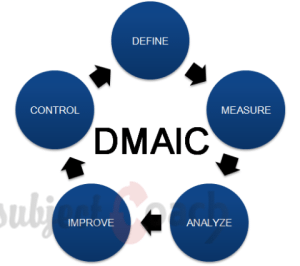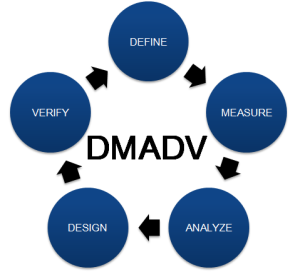Getting started with Six Sigma
Chapters
Six Sigma Methodology
Six Sigma uses two different sets of methodologies DMAIC and DMADV to examine and address aspects of business processes. The DMAIC and the DMADV distinction are aimed at viewing different sector of a business simultaneously but addressing them separately. Despite unique distinctions the methodologies overlap during the examination process and share the same end goal - improvement of business processes.
Each methodology has own set of guidelines and goals targeted at improving business processes through the statistical tools and use of data collections. While the methodologies are designed to achieve same thing there are noteworthy differences between the two that should be considered by professional in leaderships roles or in business environments with a wide range of organizational settings.
DMAIC
The set of Six Sigma methodologies that is most applicable to the manufacturing or production side of a product or service DMAIC includes below project stages:
- Define - address the identification of specific processes to be examined
- Measure - record data and use metrics to track effectiveness and evaluate efficiencies
- Analyze - utilize critical thinking skills to review data and clarify goals
- Improve - create changes in business processes geared toward improvement and better alignment with corporate goals
- Control - build a system of checks and adjustments for ongoing improvement in production processes

DMADV
The complementary set of Six Sigma processes that is most applicable for examining and improving the customer relations side of a company DMADV includes these project stages:
- Define - address customer needs in relation to a products or services
- Measure - use of electronic data collections to measure customer needs, response to product or review of services
- Analyze - utilize metrics to evaluate areas where products or service can be better aligned to customer goals and needs
- Design - overlap the improvements of business processes that streamline corporate goals to best meet clients and customers needs
- Verify - build a system of tests and models to check that customers specifications are addressed through on-going improvements

Description
This tutorial is an overview on Six Sigma. Six Sigma is a disciplined, data-driven approach and methodology for eliminating defects (driving toward six standard deviations between the mean and the nearest specification limit) in any process. There are 13 parts to this tutorial as given below
- Six Sigma Introduction
- Six Sigma Key Elements
- Six Sigma Organization
- Six Sigma Get Started
- Six Sigma Methodology
- Six Sigma Define Phase
- Six Sigma Measure Phase
- Six Sigma Analyses Phase
- Six Sigma Improve Phase
- Six Sigma Control Phase
- Six Sigma Technical Tools
- Six Sigma Defect Metrics
- Six Sigma Summary
Audience
If you want to get an overview on Six Sigma, this tutorial series is for you to read.
Author: Subject Coach
Added on: 18th Feb 2015
You must be logged in as Student to ask a Question.
None just yet!